How schools are arranged in different countries of the world
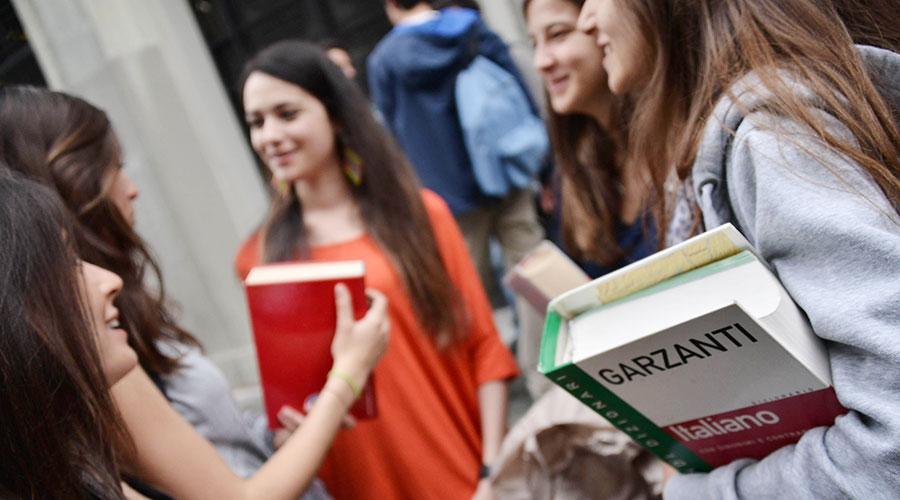
On the eve of the new school year, Izvestia studied education systems in Europe, USA and Asia, comparing them for a number of parameters - from the duration of training to the subjects that are included in the program.
Where summer holidays will last no more than 10 days, why students in Italy are forced to change schools and the difference in prestigious British education - in a special material by September 1.
Europe
Photo: Global Look Press / ZB / Patrick Pleul
Age
In most cases, children here go to school earlier than in Russia: European first-graders are usually six years old. In Italy, parents can decide themselves when sending a child to school - teachers according to the law are obliged to take even five-year-old.
Schedule
Schoolchildren in Europe learn longer than in Russia: sometimes they remain at school to eight hours. However, this time includes a clock break for lunch, walks on the street, excursions, games, sports. In addition, they do not allow the house of volumetric tasks.
Items
Most often, more complex items - for example, mathematics or native language - are put in schedule on the first half of the day, especially in junior grade. Standard set - mathematics, languages, accurate sciences, history and social studies - is present everywhere, but accents are separated in different ways. For example, Italy believes that literature is too complex subject for 13-14-year-old students, therefore, in the program, it is assigned quite a few hours.
Start of year
In most European countries, the academic year begins at the beginning of autumn, and the exact date may vary depending on the peculiarities of the region - in the hottest area, for example, students can give an excessive week of rest in the fall, so that they make it in winter.
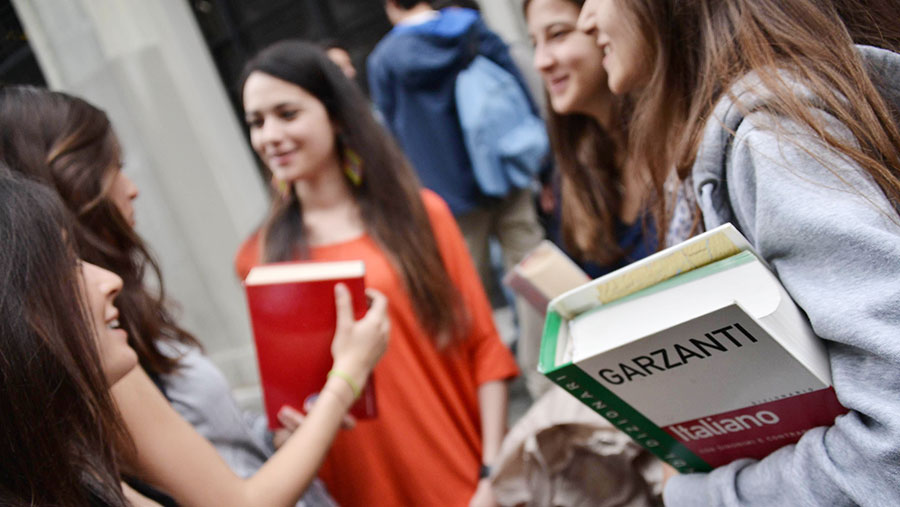
Photo: Global Look Press / Matarazzo / Fotogramma / Ropi
Evaluation System
Throughout Europe, the assessment system is different, but the scale has more Russian five points everywhere. In France, students are assessed on a 20-point system. In Italy - 10-point when it comes to each separate subject. The final exams introduces a 100-point system, and the disciple is also charged points for additional activity: sports progress, performances in contests. Therefore, an excellent student who actively engaged in sports or other extracurricular activities may eventually obtain a mark of 110 points. The closer to the Russian system of Germany - there a student can get from 1 to 6 points.
Help Izvestia
In most European countries, schoolchildren learn for 13 years, while compulsory education is designed for 10 years - followed by college or targeted preparation for admission to the university.
For example, the system is working in Italy or France: children go to primary school at an early age - in five or six years. Then follows the secondary school, and most often the transition is accompanied by changing the class. In Italy, this is generally a prerequisite - elementary schools are not connected with Middle, and children, wandering in junior grades, change the school. It is believed that in this way they learn better adapt to changing life circumstances.
After graduating from high school in Italy and France, those who wish can enter the lyceum, but from this moment the training becomes paid. The choice of lyceum - creative, humanitarian, naturally scientific or with an emphasis on vocational education - depends on the plans of the student for the future. In Italy, they will be determined with plans for the future, the teenager falls at 14-15 years.
In Germany, school education lasts as much as in France and Italy, but the division here is even earlier. After graduating from elementary school, children are less located for studying for five years of study - after that they can receive professional specialties that do not require high qualifications. More capable students pass a six-year course in a real gymnasium, after which the 11th and 12th grades of the gymnasium can additionally finish. The 13th grade is considered very difficult and need only to those who plan to enter the university.
Great Britain
Age
British children begin to study at five years, but this is a preparatory school, where the focus is on games and socialization. In the primary school (Primary School), the Program appears basic objects. The emphasis at this time is being done on the project work to help children go dry.
Schedule
The time that the student spends at school may vary depending on the school - it also depends on whether it is learned in the guesthouse or in a regular school, and whether it is private (which in the UK is very common) or state. Lessons begin at 8:30 or 9 hours, provided for a clock lunch break. And after classes, in most cases, extracurricular activities are waiting for children - for example, sports or work on joint projects.
Start of school year
Usually, students go to school at the beginning of autumn, but the date may vary depending on the educational institution - sometimes, for example, lessons start before September 1. School year is divided into three semesters - in summer, schoolchildren rest six weeks, in winter and spring - for 2-3 weeks.
Items
The main objects are mathematics, natural science, sports, language, - appear in the program still in elementary school. As a second language in the UK, French is most often choosing. Closer to senior classes, students get the opportunity to choose some of the items depending on their plans for the future and thus make themselves an individual schedule - as a result, the composition of the class often changes from classes to occupation.
Evaluation System
Estimates in the UK are set on a 100-point scale. In this case, there is a special classification that allows you to relate the resulting number of points with the level of the student. Estimates from 70 points and above are equal to the domestic five, to four with a plus - from 60 to 69, to four - from 50 to 59 bvlov, to the top three - from 40 to 49, to a twice with a plus - 30-39 points, and all What is below 30, - absolute neud.
Help Izvestia
Due to the prestige of its formation, England is a mansion in a number of European countries, although the basic principles here are very similar to the pan-European. Training is divided into three stages: primary and secondary schools, as well as the most complex, pre-sustavitary, years.
Much attention, especially in elementary school, where children remain up to 11-12 years old, pays for the socialization of students and sports.
In the UK more than in other countries, guest houses are common in which schoolchildren learn and live throughout the week. In addition, in the country there are popularly separate training of boys and girls - it is assumed that in this way it is possible to achieve greater equality: children have to carry out all the responsibilities, and not divide them on gender signs, and in classes do not arise difficulties due to the fact that girls in This age is often more perceptible and susceptible to knowledge than boys.
USA
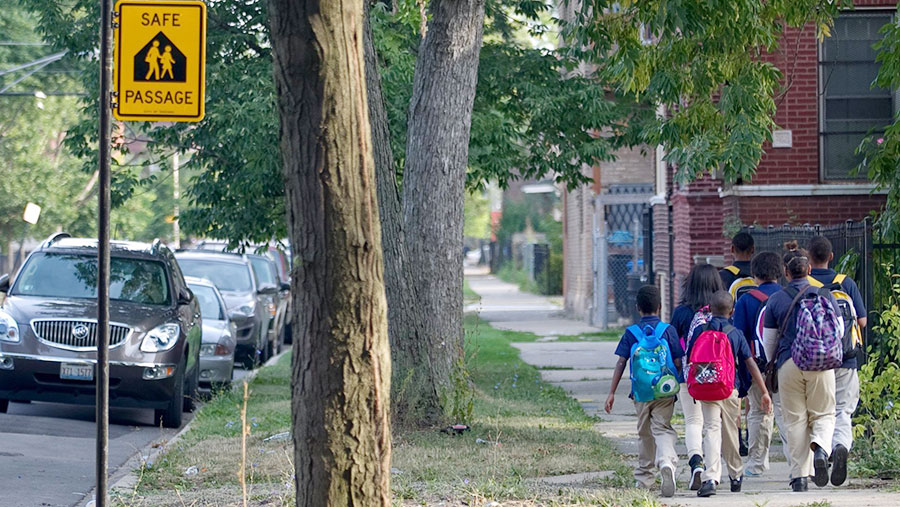
Photo: Global Look Press / Zuma / Alex Garcia
Age
Learn Americans begin with six years, but in primary classes a set of objects is limited - children learn to write, read, study arithmetic. Most often, students in classes are distributed in terms of knowledge - based on the results of the tests that they pass at the very beginning.
Schedule
At school, students are seven hours - on average lessons last from 08:30 to 15:30. The whole academic year is designed for 180 days and is divided not by quarter, but for semesters. The remaining 185 days comes on the weekend and vacation - the unified system does not exist here, they are determined separately in each state and each school.
Start of school year
As in Europe, the academic year in the United States begins at the end of August / early September, and the exact date may vary from state to state.
Items
As in the UK, American schoolchildren can themselves make themselves a program, choosing items that meet their further goals, abilities or interests: In the younger secondary school, it is usually no more than five items, in high schools you can choose most of the items for studying yourself. Mandatory for everyone includes mathematics, natural sciences, English language and an analogue of domestic social studies. For each subject, a certain number of "credits" - the student must make a program in such a way that at the end of the semester in the amount it has the necessary number of these points.
Evaluation System
Estimates are exhibited in the letters, there are only five of them - a, b, c, d, e. However, they are still calculated on the 100-point system. So, but analogue of our five, it is set for 93 points and more, and less than 63 points is already E, the lowest of possible estimates. At the same time, school assessments in the United States are not communicated to anyone except the student and his parents.
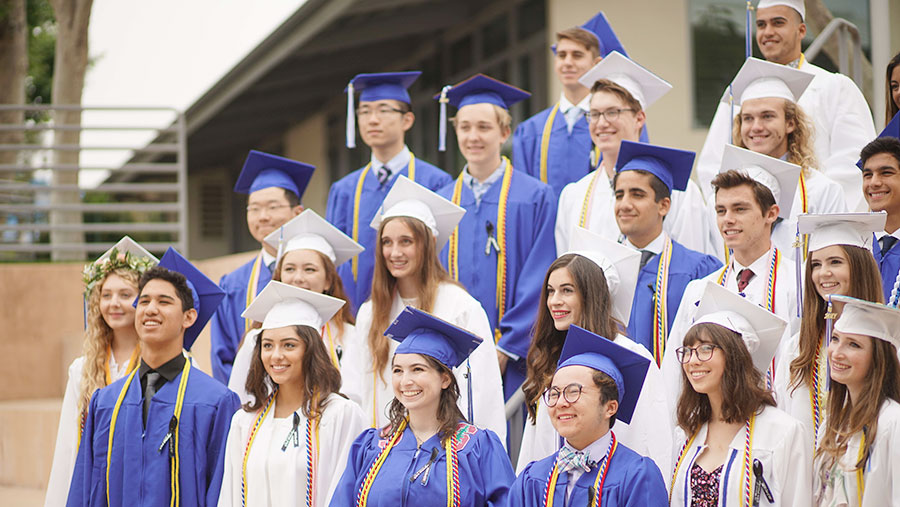
Photo: Global Look Press / Zuma / Sandy Huffaker
Help Izvestia
American children go to school from six years old and learn to about 17: the school system includes 12 classes. Children are starting to cook in senior groups of kindergarten or in a preparatory school where they come at the age of five.
Learning in the younger school is designed for 6-7 years, depending on the educational institution, after which children go to high school, where they remain up to the ninth grade. Medium schools can be multidisciplinary, academic or professional. This follows the so-called older secondary school - the 10-12th grades, but they first learn in them first of all those who after studying would like to enter the university.
Formally, school education is state, but the authorities of individual states can make their own directions to the general system - therefore, schoolchildren may differ from the state to state.
Asia
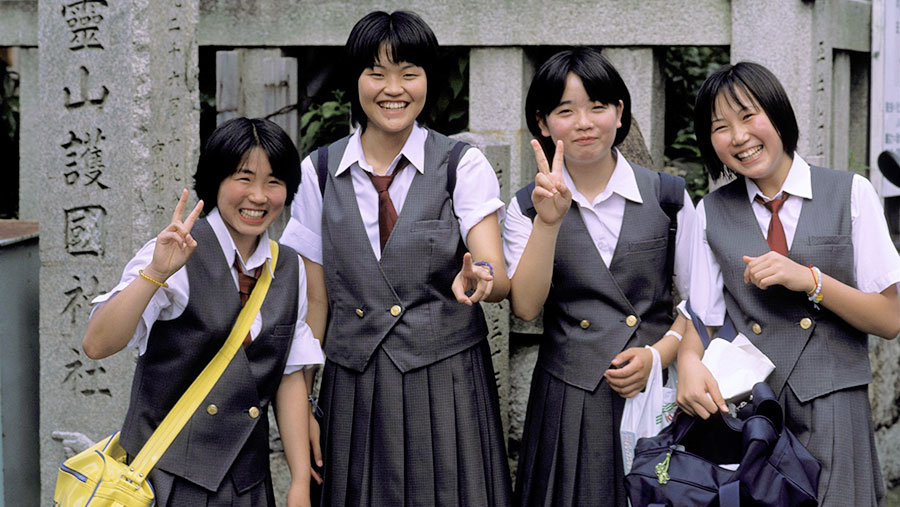
Photo: Global Look Press / Danitadelimont.com
Age
Learn the Japanese and the Chinese begin at six years, not counting the kindergarten and preparatory groups whose programs are much more saturated than in Europe.
Schedule
In China, studies at school begins at 8-9 in the morning, but it is assumed that by this time the schoolboy has already devoted at least an hour to independent classes. Lessons ends about 4, after which a few more hours the child spends on additional classes and, if enough forces, in the evening dedicates some time independent studies. The schedule of the weekend is not very different from everyday life.
In Japan, the schedule in children is about the same - classes last from 8 am to 6 pm, while, as in Europe, in the middle of the day they are waiting for a clock break. In the evening, children go to tutors or do at home on their own. And the holidays use as a chance to tighten the knowledge of individual subjects.
Start of school year
In Japan, the academic year begins in April and is associated with the beginning of a new cycle in nature. In China, he is tied to a global system - students go to school on September 1. It is divided into studies for the first half of the year - the second begins on March 1, and the summer holidays often last no more than 10 days.
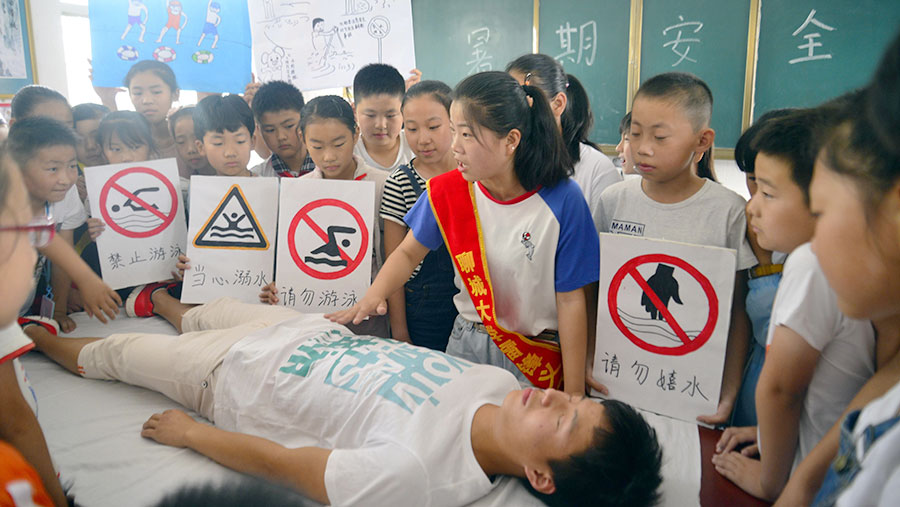
Photo: Global Look Press / Zuma / Zhao Yuguo
Items
Most of the time at school is spent on the native language and mathematics, then the generally accepted items are followed - history, natural sciences, social studies. It is mandatory for a foreign language, most often - English.
In Japan, the schoolchildren study not only modern Japanese, but also an ancient and medieval. As a bonus, most schools have good sports fields and music offices equipped with a variety of modern tools.
Evaluation System
In Japan, as in the United States, the estimates are set to letters - only five letters, from A to E, - each letter corresponds to a certain result of the 100-point system. China also has an alphabetic evaluation system.
However, the highest stress point and the most important assessment for Chinese and Japanese schoolchildren are the results of final exams and entrance exams in universities. Gaocao's All-China Entry Exams, for example, lasts for three days and are a real strength test. With no less voltage, the final exams are connected for the Japanese - their results are published on special scoreboard, which are collected applicants.
Help Izvestia
In the East, and first of all in China and Japan, the school system differs from European and American its demandingness to students. If in the West the focus is on the social adaptation of children, their individual development and sports, then in Japan, for example, the arithmetic children are beginning to learn in kindergarten.
There they also learn self-governing when four-year-old kids are appointed by senior duty officers in the group.
And in China, and in Japan, the vacation time in children is extremely limited, and most of his free time even in school days they spend on independent classes, hiking for tutoring and special out-of-school training groups. The same applies to a short vacation, during which they use free time to perform more additional tasks and still pull their level of knowledge.
As in other countries, school education is broken here in three stages: the initial, medium and graduation, it consists of 12 classes, and the mandatory are nine. And for training in the 10-12th grades, parents have to pay.
Latin America
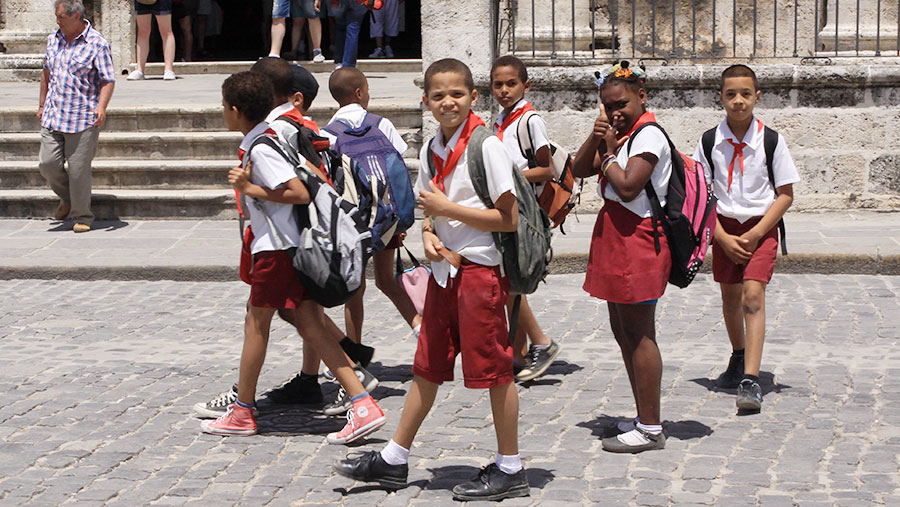
Photo: Global Look Press / ZB / PETER ZIMMERMANN
Age
Primary education in Argentina is necessarily for all children aged 6 to 12 years. A similar system acts on Cuba, where every child from 6 to 11 years old is obliged to undergo a basic school course. In Brazil, primary education lasts 8 years, and in Argentina and in Cuba - 6 years without taking into account pre-school classes. As for secondary education, it is divided into a basic average duration of 4 years and the total average that lasts 2 years. At the same time, in Brazil, secondary education can be obtained for 3 years, and in Argentina - in 5-6 years. In Mexico, children come to the first class at the age of 6. After 6 years, they go to an incomplete high school. Having studied two more years, students decide to continue their studies or go to work.
Schedule
In Argentine schools there is an ordinary five-day. In elementary school, classes are usually starting at 8:30, and in the middle classes the first lesson can start an hour earlier, at 7:30. Morning learning lasts there, as a rule, until 13:00, and the evening - from 13:00 to 17:00. With a difference from half an hour, the study begins at the other other Latin America. The academic year lasts there on average from 180 to 190 school days.
Start of school year
As winter in Latin America begins at a time when in Russia - summer, then the start of the school year has to have for other months. For example, Brazilians, Argentines and Kostarikans go to study in the first week of February. And in Chile and Uruguay, students go to school in March. The exception is Mexico. There the academic year begins in September and lasts until June 30 with vacations in December and April.
Items
Education in Cuba consists of several steps. From the first to the fifth, children are studying mathematics, computer science, environmental education, they receive artistic education and attend physical education lessons. On the sixth stage, several more items are added: English, Cuba history, Cuba landography and labor education. It is also worth noting that earlier in Cuba in the same class, from 30 to 45 people studied, but after the formation of the education system, the number of students in the same group decreased to 15 people.
In Argentina, for example, bilingual schools are popular. There a school day consists of two shifts, while the second shift is in a foreign language. In the usual schools of Argentina, the second language is starting to study from the fourth grade. In addition to English, children can also choose French and Italian. Special attention is paid to musical and theatrical education. Pupils have the right to choose a direction in training, one of which is devoted to the art. Among the most popular circles are gymnastics, choir and dancing.
In addition, the literary program of Latin American countries is attracted. Works that in Russia are studying in higher educational institutions, in Colombia included in the obligatory school curriculum. It is impossible to go to the university, without reading the "hundred years of loneliness" Gabriel Garcia Marquez, "Game in the Classics" Julio Kortasar, poetry Pablo Neruda, "Modest Hero" Mario Vargasy Lronas and other works of Magic Realism Masters.
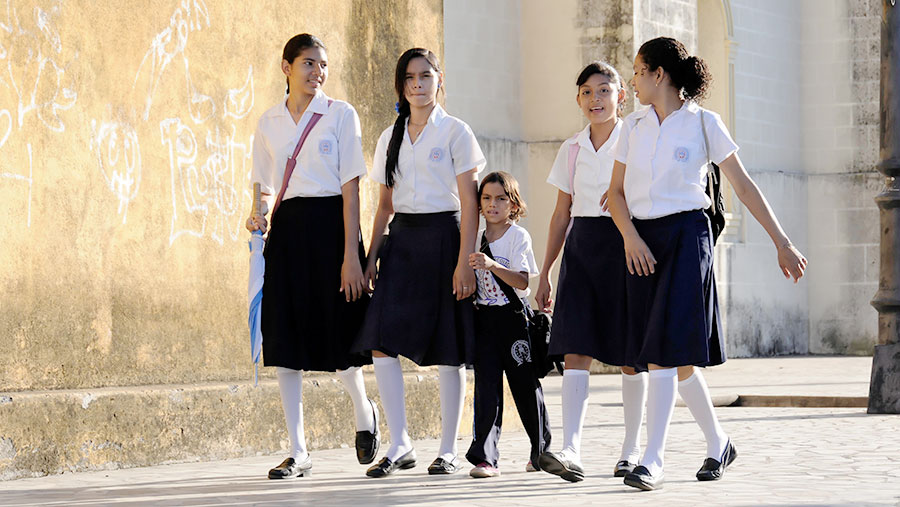
Photo: Global Look Press / ImageBroker.com / Egon Bömsch
Evaluation System
Estimates are set on a 10-point scale. At the end of each trimester, the disciples receive a score, which is calculated from the results of intermediate tests. 7 is counted 7. But even if the student will not pass all the items, he can continue his studies. Nevertheless, the certificate of the end of the secondary school will not receive until the debt closes.
Some schools have a 5-point estimated scale. Such institutions are found in Colombia. According to the local scores system, 0 to 2.9 - unsatisfactory result, from 3.0 to 3.4 - acceptable, from 3.5 to 3.9 - good, from 4.0 to 5.0 - excellent.
Help Izvestia
In recent decades, the level of education in Latin America has grown sharply. In general, the cube is especially highlighted. Back in the mid-1950s, about 1 million children did not study at all in schools. Now Cuba spends on state formation, according to some data, 10% of the budget, ahead of this indicator and the United States, and the UK.
Nevertheless, the palm of higher education championship belongs to Brazil. According to the rating of the best universities in Latin America, the University of São Paulo is ranked first, and the State University of Campinas is located on the second line, which is also in Brazil. Troika leaders closes Catholic University of Chile.
At the same time, the direction of learning, depending on countries, is greatly different. In Brazil about 60% of Humanitarian universities. At the same time, the interest of applicants to nuclear power is growing in Argentina, although medicine continues to be the leading sphere of science.
In addition, the majority of universities of Latin America provide free learning. The exception is unless that Chile: there the state pays only primary education, while the cost of learning in Chilean universities is inferior only by the United States.